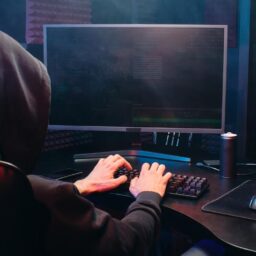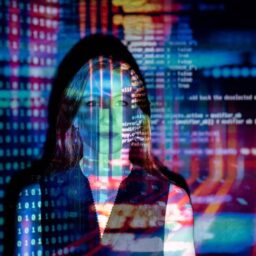INTRODUCTION
In today’s world, the internet is accessible to all at a negligible cost and is the quickest source of information. The former CEO of Microsoft Bill Gates stated that the world is becoming a global village and its town square is the Internet. With a single click on cyberspace, different sites open up. The owners of the copyright appraise computer networks or the internet as a curse more than a blessing. Cyberspace is a threat to exclusive copyrights. There are three reasons why this whole cyberspace is considered to be a powerful menace for copyright users:
- The cyber-world is accessible by any person at any point in time without any considerable impediments.
- There is wide distribution and dispersion of information over the internet platform. People can learn anything over the internet in a very short period and at a limited cost.
- The cost of the distribution is almost very low.
Regarding copyright infringement, there are different legal disputes related to copyright which the amelioration of the internet has raised. Such issues are raised with hardships over the court as copyright infringement occurs over digital networks and the internet. Copyright infringement occurs over different platforms and extends to information, photos, movies, music, videos, audiovisuals, and multimedia. However, the material which is mentioned just cannot be easily uploaded but also can be downloaded properly with the same quantum of ease. The words internet and digital are not included in the Copyright, Designs and Patents Act 1988. The Indian Copyright Act, 1957 protects computer software over copyright issues. Section 4 of this act mentions the list of acts for which copyright can be filed. Any provisions under Section 14 of the Copyright Act, 1956 will apply only to the owner of a digital product that constitutes copyrights. Thus, any infringement in digital work or any publication or work on the internet will result in copyright infringement.
Copyright Infringement on Cyberspace
Copyright Infringement has become very much prevalent in these times. As we have discussed, the internet and digital computers are the biggest threat to copyright holders. The most important feature to be noted is that it is not very easy to determine whether the works and publications are a copy of the protected work and whether it infringes the original work. Copyright infringement is not always an intentional one. Infringement can also be due to ignorance. The infringement over the internet takes place in different avatars which are described below:
- Framing
Framing is a process where one website incorporates the information and contents from another website and compiles it in a proper frame, then though the content is incorporated the framing website appears original. In this process, each frame has its importance and functions independently. Thus, once the information is downloaded, it automatically goes within the same frame and does not overlap with another frame. The user views the information as an original one ignorant of the fact that the information is from another website. The process framing is shown in this case Washington Post Co v. Total News Inc,[1] where the designer, in this case, made a website that consisted of 1200 news sources. The news column of the plaintiff appeared on the defendant’s website but the URL totalnews.com appeared on the top of the page. The plaintiff filed a suit against the defendant for the Infringement of copyright. Lastly, an outside court settlement was reached and the defendant agreed to stop the practices of framing.
- Linking
This is the process to connect a user from the original site to a linked site. Access to the website is provided to the user through the original site and the URL is not needed to type it separately. Linking is of different types such as surface linking, deep linking, and in-line linking. Different legal issues are raised through linking.
The original site has the link to the homepage of another site which is known as surface linking. In deep linking, the link of the original site has links to inner pages where the user can access the other websites and information from other links. The surface linking will not lead to the Infringement of copyright because it provides the linked site merely whereas deep linking results in copyright infringement as it exposes all the information and materials of other sites. Referring to the case Shetland Times Ltd v. Dr. Jonathan Wills and Zet News Ltd,[2] here the defendant designed a website with different hyperlinks on that site. These hyperlinks provide important and relevant stories of that case. Automatically, this link bypassed the original page. The copyright protection was granted by the court for an interim injunction.
- Caching
This is temporary storage space. As we all know what a cache is, Computers have caches such as hard disk space, disk cache, and Cache memory. Thus, we can say when a material is copied from the original one and transferred to a cache, then the process is called caching[3]. It is executed in three ways: firstly by copying the original document directly from the computer screen. Secondly, the information is copied and retained with the original documents which the user has reviewed in the past. The third one is that the documents are not stored in a personal computer but these are stored in an internet service provider or inside a proper website.
- Public display of right by posting or uploading
When an original work, whether writing, photography or anything gets published on the website or Internet, then it has unrestricted viewing. Also when a copyrighted work gets published on the website without proper permission by the owner, then it is a case of infringement because there is no authorization. There is no straight-jacket formula to arrive at a proper conclusion and to decide whether one is copyright or not and how it is done. In the case, Playboy Enterprises Inc v. Frena,[4] the person who is a defendant created a bulletin board service where infringed materials were present in this board. Hence, the plaintiff filed a suit against the defendant for copyright infringement. The defendant stated that he was ignorant of the fact and did not do it deliberately as he was not aware of this infringement. The US district court still held the defendant liable for this fact as copyright infringement is a very serious issue and unawareness cannot be taken as a proper reason.
- Archiving
It is a process that is between framing and linking. This has a hyperlink that is framed from a different website and further creates a conduit between the two. In this process of archiving, there is downloading and storing of information of another website which is incorporated in the same way. Archiving any site or information without proper authorization or permission of the actual owner will lead to infringement.
JURISDICTION IN THE CASE OF COPYRIGHT INFRINGEMENT OVER CYBERSPACE
The jurisdiction can be easily established over the internet and its tangible space. Unfortunately, if there is an infringement on the internet, certain legal issues are raised concerning cyberspace. Different countries have different jurisdictions. It is determined according to the origin of the material or its storage or where the actual material is placed. The infringer who is responsible for infringement over cyberspace can escape after committing a crime. This is very difficult to identify whether the infringement has been made because the word internet has different complexities and technical diversifications. That is the main problem that even after the crime is established, jurisdiction is not determined as the conflict of law exists. There is financial viability and feasibility which creates another obstacle.
JURISDICTION UNDER INDIAN COPYRIGHT ACT, 1957
According to the Copyright Act 1957, there is an additional forum of the jurisdiction in Section 62 to seek redressal of the injury. This states that the person has voluntarily done something, carried business, and has gained out of that. In the case of Yahoo! Inc v. Akash Arora,[5] mere accessibility was established but the Delhi High court said the proper cause of action could also be established by something else, not just accessibility. The scope of jurisdiction can be enhanced because plaintiffs were within the local limits of the state. To understand Infringement over the internet, a minimum contact has to be established if the business is carried in India. Suppose if the plaintiff files a suit in a foreign court against an Indian, it is enforced under Section 13 of the Civil Procedure Code 1908.
CONCLUSION
Thus we can conclude that the Internet is more a curse than a blessing to the copyright owners. Different types or modes of cyber Infringement are occurring over the internet and proving that is difficult. As technologies are getting advanced and speeding up day by day, the laws and the courts should catch up with the pace of such developments. Although if we look at the laws, we find that there are so many laws to combat cybercrime but somehow these laws are very ineffective. The hackers have different plans and techniques to hack all the information and private data as well as surpass all the cyber security. With proper analysis of legal, ethical positions and practices, the issues of monitoring, privacy, communication, consent with a technology need to be coupled up. The hybrid digital networks and multimedia will come up with new issues as the technology will be developed and new laws will be required to address new issues in copyright protection in the dynamic digital world. Now, this is a very urgent need of time to stand up against cybercrime and infringement.
Author(s) Name: Sharanya Chakraborty
References:
[1] No. 97 Civ. 1190.
[2] FSR 604, 1997 SLT 669.
[3]Mac Milan v/s Cooper (1923) 93 LJPC 113 and 117.
[4] 839 F Supp 1552 (MD Fla 1993).
[5] (199) 19 PTC 210 (Del.).









